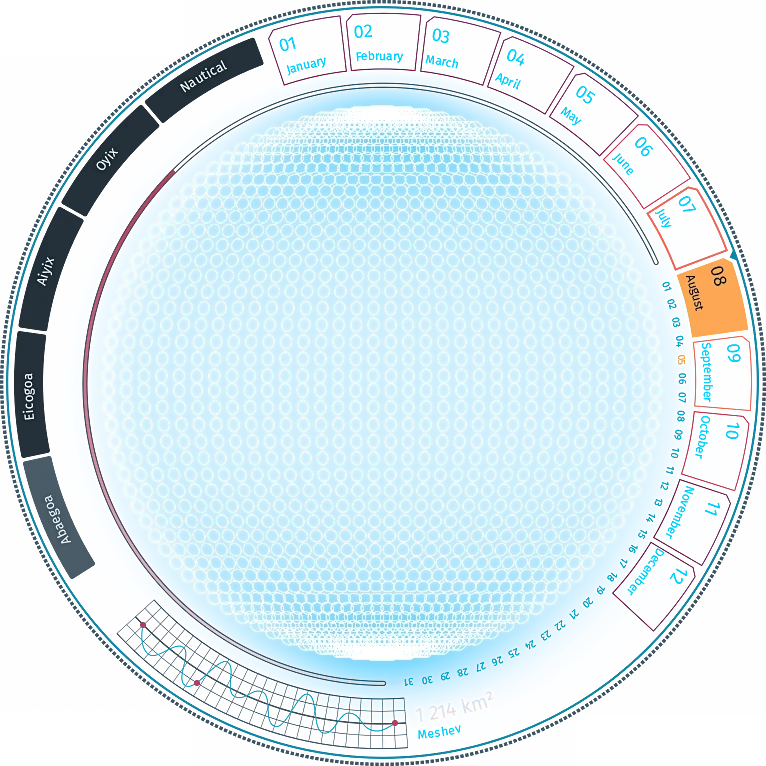The Ranic Language (ˈbehjan)
...and he stood holding his hat and turned his wet face to the wind...
te to rumpi mompu to yumpo te wapin to kahen tente go horu
Pronunciation: /te to ˈɾumpi ˈmompu to ˈjumpo te ˈwapin to ˈkahen ˈtente go ˈhoɾu/
Behyan word order: and he stood holding his hat and turned his wet face to the wind
te to rumpi mompu to yumpo te wapin to kahen tente go horu
Pronunciation: /te to ˈɾumpi ˈmompu to ˈjumpo te ˈwapin to ˈkahen ˈtente go ˈhoɾu/
Behyan word order: and he stood holding his hat and turned his wet face to the wind
Spelling & Phonology
Consonant inventory: b d g h j k m n p s t w z ŋ ɾ
| ↓Manner/Place→ | Bilabial | Alveolar | Palatal | Velar | Glottal |
|---|---|---|---|---|---|
| Nasal | m | n | ŋ | ||
| Stop | p b | t d | k g | ||
| Fricative | s z | h | |||
| Approximant | j | ||||
| Tap | ɾ |
Co-articulated phonemes
| ↓Manner/Place→ | Labial-velar |
|---|---|
| Approximant | w |
Vowel inventory: a e i o u
| Front | Back | |
|---|---|---|
| High | i | u |
| High-mid | e | o |
| Low | a |
Syllable structure: Custom defined
Stress pattern: Penultimate — stress is on the second last syllable
Stress pattern: Penultimate — stress is on the second last syllable
Spelling rules
| Pronunciation | Spelling |
|---|---|
| j | y |
| ŋ | ng |
| ɾ | r |
Grammar
Main word order: Subject Verb Object (Prepositional phrase). “Hina opened the door with a key” remains Hina opened the door with a key.Adjective order: Adjectives are positioned before the noun.
Adposition: prepositions
Nouns
| Singular | Plural | |
|---|---|---|
| Definite | No affix sogi /ˈsogi/ the dog | Prefix jo- yosogi /joˈsogi/ the dogs |
| Indefinite | If starts with vowel: Prefix z- Else: Prefix zu- zusogi /zuˈsogi/ a dog | Prefix u- usogi /uˈsogi/ some dogs |
Articles
Behyan encodes definite article ‘the’, and indefinite article ‘a’ in noun affixes. See Noun section.Pronouns
| 1st singular | ten /ten/ I, me, mine |
| 2nd singular | wa /wa/ you, yours |
| 3rd singular masc | to /to/ he, him, his, it, its |
| 3rd singular fem | sen /sen/ she, her, hers, it, its |
| 1st plural | yu /ju/ we, us, ours |
| 2nd plural | kun /kun/ you all, yours (pl) |
| 3rd plural | ko /ko/ they, them, theirs |
Possessive determiners
| 1st singular | ten /ten/ my |
| 2nd singular | wa /wa/ your |
| 3rd singular masc | to /to/ his |
| 3rd singular fem | sen /sen/ her |
| 1st plural | yu /ju/ our |
| 2nd plural | kun /kun/ your (pl) |
| 3rd plural | ko /ko/ their |
Verbs
| Singular | No affix honse /ˈhonse/ (I/you/he/she/it) learn/learned/will learn |
| Plural | Reduplicate last part of last syllable honsee /honˈsee/ (we/they) learn/learned/will learn |
| Past | Particle before the verb: nu - nu honse /nu ˈhonse/ learned |
| Future | Particle before the verb: bo - bo honse /bo ˈhonse/ will learn |
Progressive aspect
The ‘progressive’ aspect refers to actions that are happening at the time of speaking, such as I am learning.Behyan uses an affix for progressive:
| Progressive | Prefix u- uhonse /uˈhonse/ is learning |
Habitual aspect
The ‘habitual’ aspect refers to actions that happen habitually, such as I learn (something new every day), as opposed to actions that happen once (I learned something).Behyan uses an affix for habitual:
| Habitual | If starts with vowel: Prefix t- Else: Prefix ta- tahonse /taˈhonse/ learns |
Derivational morphology
| Adjective → adverb = Prefix a- |
| Adjective → noun (the quality of being [adj]) = If starts with vowel: Prefix ɾ- Else: Prefix ɾu- |
| Adjective → verb (to make something [adj]) = If starts with vowel: Prefix m- Else: Prefix ma- |
| Noun → adjective (having the quality of [noun]) = Prefix u- |
| Noun → adjective relating to noun (e.g. economy → economic) = If starts with vowel: Prefix m- Else: Prefix mi- |
| Noun to verb = If starts with vowel: Prefix k- Else: Prefix ki- |
| Verb → adjective (result of doing [verb]) = Prefix u- |
| Tending to = If starts with vowel: Prefix k- Else: Prefix ka- |
| Verb → noun (the act of [verb]) = Prefix mi- |
| Verb → noun that verb produces (e.g. know → knowledge) = Prefix e- |
| One who [verb]s (e.g. paint → painter) = Prefix ku- |
| Place of (e.g. wine → winery) = If starts with vowel: Prefix k- Else: Prefix ku- |
| Diminutive = If starts with vowel: Prefix p- Else: Prefix po- |
| Augmentative = Prefix me- |
Numbers
Behyan has a base-10 number system:| 1 | ri |
| 2 | mire |
| 3 | son |
| 4 | ku |
| 5 | mi |
| 6 | kibun |
| 7 | sen |
| 8 | to |
| 9 | sa |
| 10 | ki |
| Hundred | zon |
| Thousand | kohodon |
Dictionary
Common Phrases


Comments